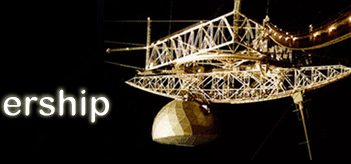

Radio Astronomy with the Arecibo 305-meter Telescope:
The Benefits of a Large Single Dish
While great advances in the mapping of astronomical objects have been accomplished using radio telescope arrays, large single-dish telescopes such as Arecibo have a unique and important role to play in radio astronomy. This is particularly true for the study of faint, extended, or time-variable sources. A large single-dish telescope, particularly when equipped with multiple receivers to maximize sky coverage, can provide a more sensitive and rapid look at a larger region of the sky.
The unparalleled sensitivity and excellent single-dish angular resolution of Arecibo allow a number of unique investigations which will not be possible with any other instrument through at least the next decade. Below are some examples of such unique contributions:
While interferometric arrays provide higher angular resolution on small areas on the sky, faint and extended objects that fill the interferometer beam are "resolved out" and do not appear in interferometric images. Also, interferometers depend upon an imaging technique that takes advantage of the rotation of the Earth. The time required to make an interferometric image may average out emissions that are transient or variable. In contrast, the Arecibo dish can detect emission from extended, faint sources; and in shorter times than interferometers can, rendering it an excellent instrument for the characterization of these kinds of emissions from astronomical sources.
Arecibo even plays a powerful role as part of intercontinental arrays of radiotelescopes.
When used in combination with other telescopes across long baselines, including into space, the large aperture of Arecibo adds considerably to the ability to map extremely fine structure in faint objects, and to detect time variations. Such variations are observed on several-hour timescales in active galactic nuclei (AGN), which are tied to black holes whose masses are billions of times the Sun's.